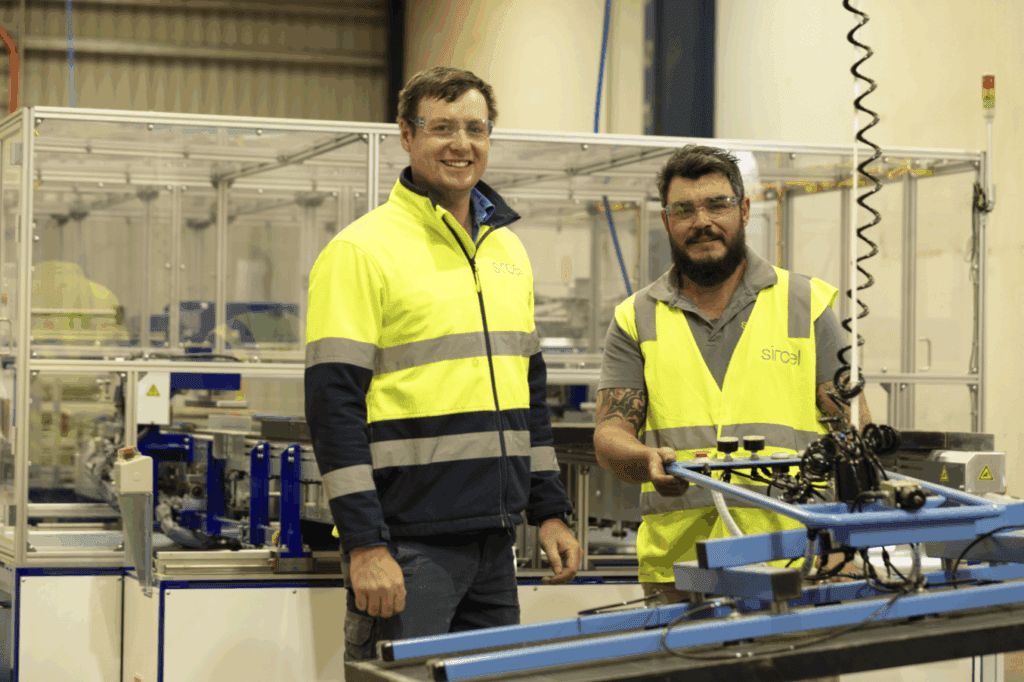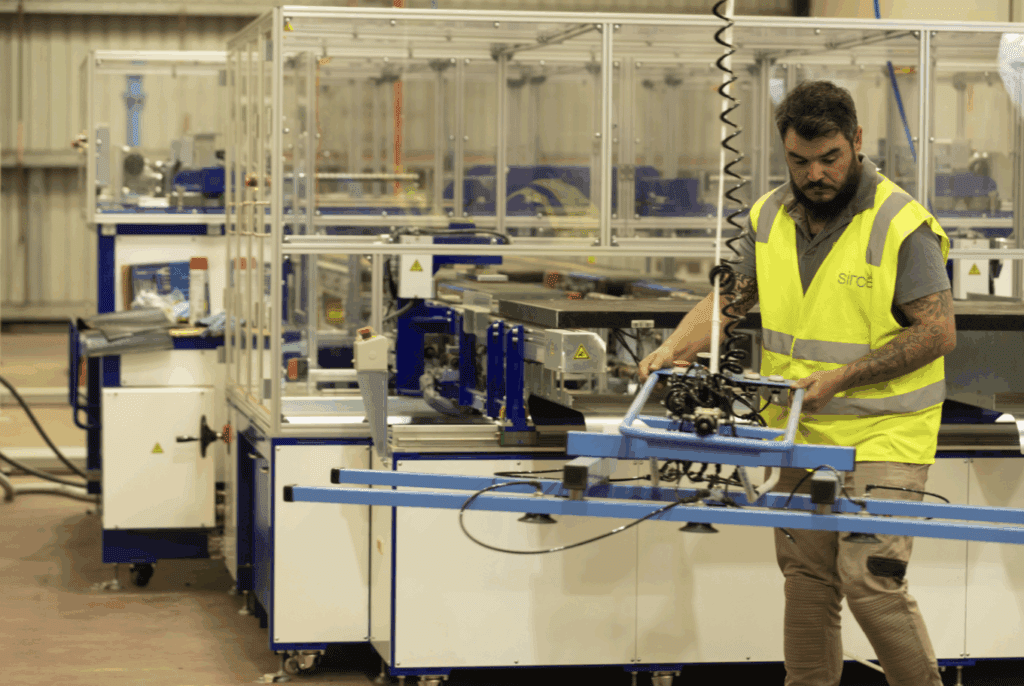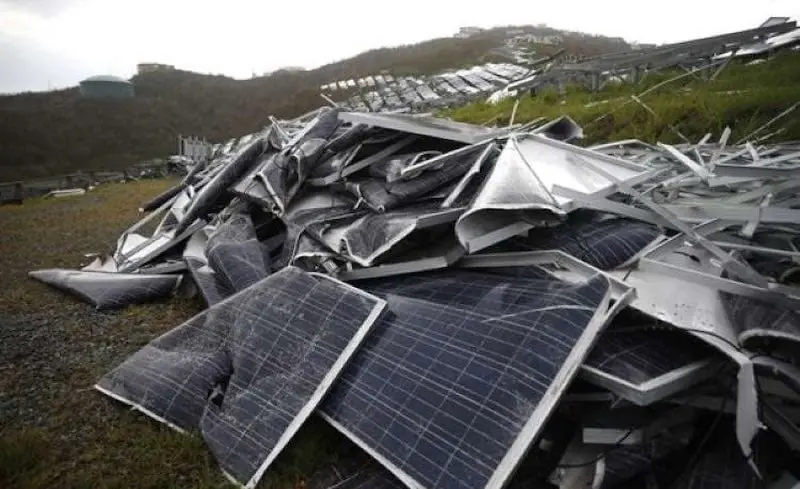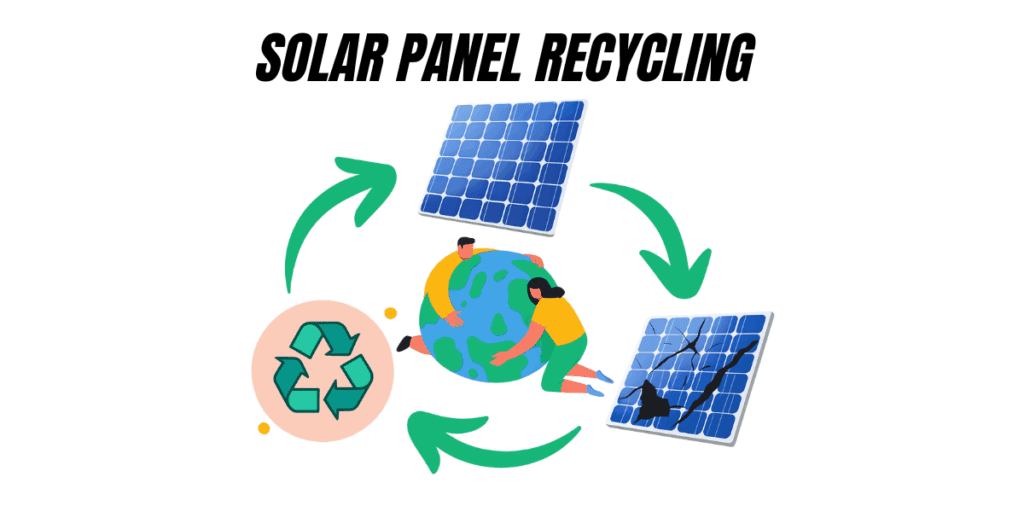Australia’s solar boom is entering a new chapter, and as early residential systems reach the end of their lives or are being retired early to make way for newer, more efficient and bigger systems, questions about solar panel recycling are rising fast.
Can you recycle solar panels and can we do it in Australia? What’s actually recovered during the process? And how much does it cost?
Table of contents
We spoke with Ben Farrelly, Operations Lead and solar recycling expert at Sircel – Australia’s largest e-waste processor – to break down the facts and bust a few myths along the way. Whether you’re a homeowner looking to dispose of panels, or an installer managing upgrades, this guide should answer some of the most common questions.
Are Solar Panels Recyclable?
Yes. Typically, over 90% of the materials in a standard PV solar panel can be recycled.

That includes:
- Aluminium from the frame
- Copper and silver from wiring and electrical contacts
- Glass from the panel face
These materials are valuable, mostly fully recoverable and in the not-too-distant future, will be scarce and in short supply. Getting them back for reuse in modern high value manufactured products is therefore a key imperative. Although some components like plastics and the high-grade silicon wafers require more advanced processing, Australian-owned and operated companies like Sircel are proving that high-recovery rates from these recycled solar panels are already achievable.
Myth #1: “Solar panels can’t be recycled”
Wrong. The idea that solar panels are not recyclable is outdated and untrue.
While Australia’s national recycling infrastructure is still growing, specialist providers have developed ways to break down and recover key materials from panels safely and efficiently. More than 90% of a panel’s components can now be reclaimed, reducing landfill and supporting a circular economy.
Myth #2: “Solar panels are toxic”
Wrong. Less than 5% of panels in use in Australia contain substances like cadmium or selenium, typically found in much older models, which are no longer installed and are easily identifiable.
The vast majority, such as crystalline silicon panels, contain small amounts of lead, copper, and silver. These are not considered toxic in the quantities used and pose no danger when handled correctly.
Currently, Victoria is the only state in Australia that has banned solar panels from being dumped in landfill. Hopefully, other states and territories follow suit, as recycling the materials and feeding them back into the circular economy not only drives important outcomes but is our collective responsibility.
What Should Homeowners Do With Old or Broken Panels?
When your solar system either reaches the end of its life or is being upgraded with new panels, follow these simple steps:
- Confirm the panels are truly non-functional
Engage a CEC-approved installer to assess your system. Many panels can continue to operate for 25+ years. - Have them removed properly
If replacement is needed, ensure your installer removes the panels safely to prevent both breakage and contamination. When solar panels aren’t damaged or cracked, we can recover much more of their valuable materials. The intact panels allow us to extract very pure glass that can be reused in new glass products and cleanly separate it from the solar cells, making it easier to recover other valuable materials like silver. - Request responsible recycling
Ask your installer to take the panels to a resource recovery centre that specialises in recycling solar panels, or call Sircel to find the nearest drop-off location*. - Get a Recycling Certificate
This provides assurance the panels were disposed of responsibly and supports compliance with evolving environmental regulations.
How Much Does It Cost to Recycle Solar Panels?

The typical cost to recycle is $20-$40 per panel, depending on:
- Panel size and type
- Whether you’re recycling in bulk or as an individual
These costs cover professional disassembly and processing, and thanks to current demand and infrastructure growth, recycling costs are only expected to decline.
Not all Councils will recycle solar panels, so check with your local Council first if they will accept them. Sircel works with Councils around Australia to collect disused solar panels from recovery centres, for example Midwaste in NSW, and safely transport them to the closest facility for recycling.
What Happens If You Don’t Recycle?

Failing to recycle panels comes with two big risks:
- Wasted resources
Valuable materials like silver, copper, and aluminium are lost forever when panels are sent to landfill. - Future scarcity
These metals are also used in electronics, electric vehicles, and renewable energy technologies. Global forecasts predict critical shortages of copper and silver in the coming decades. Recycling isn’t just good for the planet—it’s crucial for long-term supply.
The Bottom Line
Solar panel recycling is no longer a “someday” issue, it is now and it is urgent. Electronic waste (or e-waste) is the fastest-growing waste stream in the world, and thankfully Australia already has a number of home-grown recycling innovators, like Sircel.
For homeowners: if your panels are being replaced, it’s worth asking your next installer whether they partner with a certified e-waste solar recycler or drop-off provider.
For installers: as upgrades and replacements become more frequent, partnering with a reputable solar recycler adds value to your service and builds trust with environmentally conscious customers.
